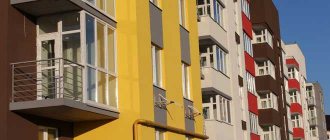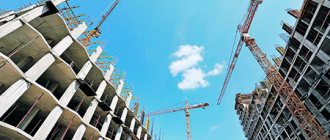Awnings can be found almost everywhere. They are built on the territory of private households and on the territory of organizations for industrial and domestic purposes, especially without thinking about what a canopy is, because everything is already clear. But the question “comes to the fore” when the need arises to register a land plot and all the buildings on it, or when interested parties file a lawsuit challenging the placement of a particular property.
As part of this publication, we decided to define what a canopy is, whether it is a building or something else, give it a comprehensive definition and understand how it is used and what it can be.
Definition of canopy: legal and everyday
A canopy is a special roof that is held in a static position by supports. The supports for such a roof are usually strong pillars, but depending on the nature and purpose of the object, the pillars may not be too strong or may even be partially replaced by walls. You may ask, what is the difference between a shed and a garage, since both the first has walls and the second? The garage has four walls, one of which has a wide opening intended for the entry of a vehicle. A canopy can only have a maximum of three walls; in addition, there are a number of significant differences, which we will discuss later.
What is a canopy in the legal sense of the word? The urban planning legislation directly states that a canopy should not be considered an object of capital construction, since it is an object of temporary construction. But at the same time, the highest courts, interpreting the norms contained in the town planning code, indicate that the court can recognize a building as capital if it:
- cannot be moved without causing serious damage;
- is non-separable;
- has a foundation;
- has fixed stationary communications (any except electricity);
- has permits as a real estate property.
Let's consider the above situations in relation to a canopy. Most canopy designs make it easy to disassemble and reassemble, which means the canopy can be moved to any other location without damage. Most sheds do not have a foundation, but even if we take into account sheds with a foundation, then for a court decision in favor of recognizing them as capital buildings, this alone is not enough. So owners of sheds with a foundation don’t have to worry, unless, of course, they made a shed from a previously registered capital construction project.
A canopy can be legally qualified as a temporary structure; however, the judicial authorities do not take into account the time period for which the canopy was erected and how long it stood, so there is no need to register it as a real estate object and, accordingly, pay tax.
Important! A shed cannot in any way qualify as a building, since it does not have any of the legal characteristics associated with such real estate.
However, this does not mean that this structure can be erected anywhere on your own land and in any way you like. If your shed creates obvious interference with the normal use of the neighboring property, the neighbors will go to court and demand that such interference be eliminated, including demolition or relocation of the shed. Be prudent, place this structure wisely.
What is this object used for?
A canopy is a rather specific structure that is used in a variety of situations and for a variety of needs. However, there are many people who confuse the concept of “canopy” with the concept of “canopy”. A canopy is often a part of a building, its architectural element, which cannot exist separately from this building. A canopy is an independent structure that can either stand separately from other buildings or be adjacent to them.
When installing canopies, you must comply with the technical conditions contained in GOST 23407-78 . This GOST, for example, determines at what angle the visor should be located. Moreover, GOST introduces regional gradation, taking into account the installation features of a given architectural element depending on the climate of a particular region. When designing and installing certain types of canopies, specialists also adhere to technical regulations, for example, GOST 21.501-93, GOST 21.204-93, we will talk more about this in a separate publication.
A canopy is one of the few structures that allows you to quickly and inexpensively hide something under a roof from bad weather, which is why canopies are very often made for cars. Entrepreneurs make canopies to protect visitors to summer cafes and restaurants from rain and scorching sun. A shed is a valuable outbuilding on a farm, where livestock, people, and even agricultural equipment and stored feed can hide under such a structure. A canopy is indispensable for street trading, because it saves the seller and his goods from bad weather.
Note! It is good to place haylofts under the canopies; on one side the feed is protected from rain, and on the other it is well ventilated from all sides and does not get wet.
Decorative awnings for a summer residence are very good, because it is cool under them even on the hottest days. The roof protects from the scorching sun, while cool air moves freely under it due to the fact that the canopy has no walls. Quite often, in populated areas in Europe and America, sections of sidewalks, usually popular tourist routes, are protected with canopies so that extreme heat and precipitation do not interrupt excursions and make them more comfortable. Sheds are even built at public transport stops so that passengers can wait for their tram, bus or trolleybus in relative comfort.
In some cases, under huge canopies they place:
- bus station waiting rooms;
- large parking lots;
- stadium stands;
- shopping arcades at street markets and much more.
We are, of course, more interested in using a carport as a country house or outbuilding, but it should be noted that a small carport in a country house and a huge carport at a football stadium have a lot in common. The roof must be strong to withstand bad weather and at the same time lightweight . The supports must be strong enough to support the weight of the roof and neutralize the effect of windage during strong winds.
Along with sheds, people prefer to build gazebos on their garden plots. A gazebo should not be confused with a canopy or any other object, because it is distinguished by the presence of a foundation or wooden base, as well as internal elements: benches, tables, barbecue and others. We will not talk about them in detail within the framework of this article, but if you are interested, you can read the publication entitled Do-it-yourself Round Gazebo.
Distinction between movable and immovable property
If permitting documentation is required for the construction of an object, then it is a capital construction project and, most likely, will be classified as real estate. If the construction of an object does not require special permission, and it can be moved without much damage or change in the main characteristics, then such an object can be classified as separable improvements to the land plot and recognized as movable property.
While the Civil Code of the Russian Federation does not clarify the concepts of movable and immovable property, the Federal Tax Service provides numerous explanations on how to check the legality of classifying property as movable or immovable for tax purposes. Only real estate is subject to corporate property tax. Movable property is excluded from the list of objects of taxation. Most often, tax authorities refer to the current civil legislation, but in this case they used recommendations from a letter from the Ministry of Economic Development and the norms of the Urban Planning Code.
Real estate legislation
The Tax Code of the Russian Federation does not contain the concepts of “movable property” or “real estate”. Article 11 of the Tax Code of the Russian Federation states that in this case it is necessary to use the definitions contained in other branches of legislation. Thus, real estate includes:
- buildings, structures, unfinished construction objects, premises, parking spaces (clause 1 of article 130 of the Civil Code of the Russian Federation);
- all types of residential premises: a house, including an apartment building or part thereof, a room, an apartment and its part (Article 15 of the Housing Code of the Russian Federation);
- residential buildings (clause 9, part 5, article 8 of the Federal Law of July 13, 2015 No. 218-FZ “On State Registration of Real Estate”);
- dachas, garages (Appendix No. 3 to the Federal Law of January 10, 2003 No. 19-FZ “On the Election of the President of the Russian Federation”).
In addition, the object may be recognized as real estate by law (clause 1 of Article 130 of the Civil Code of the Russian Federation). This:
- communication lines (Federal Law of July 7, 2003 No. 126-FZ “On Communications”);
- space objects (RF Law of August 20, 1993 No. 5663-I “On Space Activities”);
- unmanned aircraft (clause 1, article 33 of the Air Code).
Real estate according to Civil Code
The main criteria for real estate contain Articles 130–131 of the Civil Code of the Russian Federation: whether it is possible or impossible to move the object and whether the owner is obliged to register rights to real estate.
Taking this into account, to confirm the correctness of classifying property as real estate, the following circumstances must be established:
- is there a record about the object in the Unified State Register of Real Estate;
- if there is no information in the register, is there a strong connection between the object and the land and is it really impossible to move it without disproportionate damage to its purpose (with the exception of aircraft and sea vessels, inland navigation vessels and other objects related to real estate by virtue of the direct indication of federal law: land plots , living quarters, etc.).
All property that is not real estate is considered movable (clause 2 of Article 130 of the Civil Code of the Russian Federation).
Thus, real estate is firmly connected to the land. Immovable objects cannot be moved without disproportionate damage to their purpose (Clause 1, Article 130 of the Civil Code of the Russian Federation). Objects without a foundation that are moved without damaging their purpose (hangars, kiosks, etc.) are movable property.
Rights to real estate are subject to mandatory state registration (Article 131 of the Civil Code of the Russian Federation). If an object is registered in the Unified State Register of Real Estate, it is most likely real estate.
In the same time:
- state registration of rights is not a prerequisite for recognition of an object as real estate (determination of the Supreme Court of the Russian Federation of September 30, 2015 No. 303-ES15-5520);
- An unregistered object can also be recognized as immovable (clause 38 of the Resolution of the Plenum of the Armed Forces of the Russian Federation dated June 23, 2015 No. 25).
Real estate as a capital construction project
In a letter dated 02.12.2020 No. D23i-4183, which the Federal Tax Service sent to its territorial bodies, the Ministry of Economic Development reminds that it is preparing amendments to the Civil Code of the Russian Federation in terms of improving legislation on real estate.
Their main content is this: real estate is a plot of land, as well as buildings and structures that are objects of capital construction and are firmly connected to the land (their movement is impossible).
A building is the result of capital construction, which is a volumetric construction system with above-ground and (or) underground parts. This system includes premises, engineering support networks and engineering support systems and is intended for residence and (or) activities of people, production location, storage of products or keeping animals (subclause 6, clause 2, article 2 of the Federal Law dated 12/30/2009 No. 384-FZ “Technical Regulations on the Safety of Buildings and Structures”, hereinafter referred to as Law No. 384-FZ).
A similar definition is given to a structure that is intended to carry out production processes of various types, store products, temporarily stay people, move people and goods (subclause 23, clause 2, article 2 of Law No. 384-FZ).
Thus, a building (structure) includes a set of networks and engineering support systems (such as water supply, sewerage, heating, ventilation, air conditioning, gas supply, electricity, communications, information, dispatching systems, etc.).
All these components are functionally connected to the building (structure) in such a way that their movement without causing disproportionate damage to the purpose of the real estate object is impossible.
If the property is part of a property complex and cannot be used independently or if without it the property loses its functional qualities, it is taken into account as part of the real estate and is taxed (see letter of the Federal Tax Service dated April 23, 2018 No. BS-4-21/7770).
If movable and immovable objects can function separately, then they can be taken into account separately. Thus, the letter of the Federal Tax Service dated August 28, 2019 No. BS-4-21/ [email protected] provides examples from judicial practice in which the following are recognized as movable property:
- gas pipeline branch cable communication line;
- paving;
- fencing.
These are the most important criteria for real estate. But, based on the explanation contained in the commented letter, these criteria are not enough. Capital construction projects should be understood as those buildings and structures that are constructed on the basis of construction permits (notifications of the start of construction).
The likelihood of a capital facility being recognized as real estate after completion of its construction is very high.
This is supported by decisions of the Supreme Court of the Russian Federation, from which it also follows that in order to recognize an object as real estate, the same conditions are required as for recognizing a building (structure) as a capital construction object: the presence of a permit (notification) for construction and the presence of independent economic value, that is, the possibility be a separate subject in civil circulation.
Non-permanent buildings
Objects for which a construction permit is not required cannot be capital construction projects.
Non-permanent buildings include, for example, kiosks, sheds and other similar structures.
A non-permanent building is a structure that does not have a strong connection with the ground and whose design characteristics allow its movement and (or) dismantling and subsequent assembly without disproportionate damage to its purpose and without changing its basic characteristics.
The Town Planning Code does not recognize such buildings as either capital construction projects or non-capital construction projects. They can be recognized as inseparable improvements (components) of the land plot and are most likely classified as movable property.
Non-permanent construction, as a rule, does not become real estate.
Not all real estate is taxable
It remains only to add that not all real estate is subject to property tax. Real estate listed in paragraph 4 of Article 374 of the Tax Code of the Russian Federation is not taxed, in particular:
- land plots and other environmental management facilities (water bodies and other natural resources);
- objects recognized as objects of cultural heritage (historical and cultural monuments) of the peoples of the Russian Federation of federal significance;
- ships registered in the Russian International Register of Ships, nuclear installations used for scientific purposes, icebreakers, space objects, etc.
Main types of canopies
We dealt with the issue that a canopy is not a building, but a temporary structure. In fact, the shed is not a piece of real estate in the full sense of the word, even despite the presence of a foundation that can “tie” it, in the legal sense, to the land plot. A canopy is different from a canopy because it does not require a building or any other structure to fully perform its functions.
Determining the legal nature of this structure will simplify and speed up the process of registering the land plot on which such buildings are located. But let’s not “get hung up” only on the legal aspect, but consider the types of awnings.
For your information! The types of canopies can be classified on different grounds; we will mainly focus on the classification according to shape and materials of manufacture.
So, according to the materials used, canopies are:
- metal, with steel supports and a roof made of metal profile;
- wooden, with supports made of logs or timber and a plank roof;
- polymer, with metal supports and roofing made of cellular, monolithic polycarbonate, fiberglass and other light and durable artificial materials;
- glass, with steel supports and a roof made of special impact-resistant glass;
- fabric, with steel or wooden supports and a roof made of special fabric and others.
This list of materials cannot be considered exhaustive, but it is a fact that these materials are used most often. Awnings are classified not only by materials of manufacture, but also by shape . There are different types of awnings:
- semicircular;
- rectangular single-pitched;
- square single-pitched;
- triangular gable;
- irregular shape.
This refers, naturally, to the shape of the roof of the canopy, although the supports can also have different shapes and can be made in the form of straight pillars, arcs, zigzags and others. It should also be noted that sheds can be divided into two groups: with a foundation and without a foundation. Light, small-sized canopies are made without a foundation; in this case, it only complicates the process of constructing the structure, and there is no point in it. Huge canopies are another matter; there is a large load on their supports and the foundation in this case will not be superfluous at all.
To summarize, we note from the meaning of the current legal norms that it is easy to conclude that a canopy is not a building, but a temporary structure. This provision is not contained in the law as a direct definition, but the correct conclusion can be easily reached by applying a direct interpretation of the norms of the town planning code. Awnings are used by everyone and everywhere, since they have a lot of advantages and practically no disadvantages, which is perhaps why there are currently dozens of their varieties and all of them are in demand.
What are the differences between permanent and non-permanent types of houses?
Several small buildings are not capital construction projects. A permanent building can be distinguished by the following characteristics:
- The construction of permanent buildings is possible only after the preparation and approval of a full package of documents regulated by law (construction permit, commissioning permit, etc.). Non-permanent and temporary structures do not require drafting and approval of work;
- Technical documentation is always prepared for permanent buildings, which allows obtaining ownership rights. It is not possible to issue title papers for temporary shelters;
- As a rule, the service life of non-permanent buildings is short, and after a regulated period of time the building is subject to demolition or disassembly. The service life of a permanent house is much longer, usually up to 50-100 years and is regulated by the technical condition of the supporting structures. A permanent building can be demolished only if it is declared unsafe;
- The capital building is clearly tied to the land plot. It is built on a foundation, so moving the load-bearing structures is impossible. The temporary structure, if necessary, can be moved to another location.
When determining the type of structure and its connection with a capital object, the following terms are used: “structure”, “building” and “structure”.
A building is a constructed object that includes premises located in the underground and above-ground parts, as well as utility lines. Buildings are erected for permanent residence or location of people, organization of production activities, storage of products, or keeping animals.
A structure is a non-residential facility used for production and warehouses, moving goods and people. At such facilities, people, primarily service personnel, are located temporarily. The structure of the buildings is not suitable for permanent residence.
A building as a capital construction facility, which after construction is not registered with Rosreestr. Most often, this term is used as a synonym for a building, objects of unfinished construction, or as a general concept.
Classification of capital construction projects by functionality
Linear objects are structures for which certain operating conditions must be observed. These include, for the most part, infrastructure facilities: highways, pipelines, roads, power lines, tunnels.
Before the start of construction of a linear facility, all technical documentation is studied directly on the territory, and specialized equipment is used for geological and construction surveys and land surveying. A permit to carry out construction work is issued only after completing a package of necessary documents and agreement with the authorities.
Production and industrial structures include capital buildings erected for operation in agriculture and water management, trade, industry, transport, in the field of sales and logistics, communications, and public catering. Their goal is material production. These also include linearly extended objects.
Non-production facilities are administrative buildings, healthcare institutions, cultural and educational facilities, housing and communal services, and social facilities. Their goal is to provide cultural and everyday services.
There is also a definition of structures of defensive significance - these include buildings and structures necessary to ensure the security of the country.
Types of capital construction
The Urban Development Complex also clearly defines the types (types) of capital construction:
New construction is the construction of new buildings and complexes, which, upon completion of work, will be put into operation and taken into account.
Reconstruction - this means carrying out work at the facility in order to restore load-bearing structures, eliminate defects resulting from the wear and tear of the building, as well as to improve the facility. Not only individual structural elements are subject to restoration, but also the structure as a whole.
Restoration (renovation) is the renovation of the facade and premises from the inside, reconstruction and redevelopment of the internal space.
Expansion (superstructure) – increasing the area of a real estate property, followed by placing this building on a separate balance sheet.




